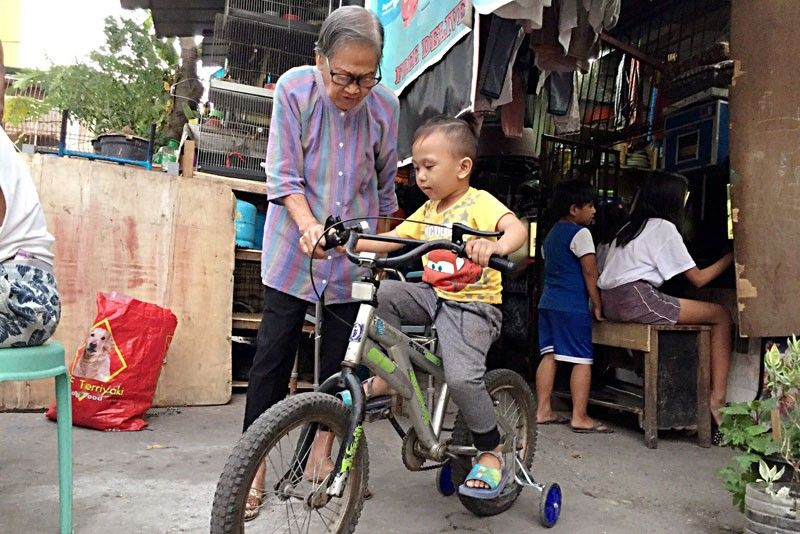Next generation takes up fight for comfort women’s rights

MANILA, Philippines — The fight of a community of comfort women, longing for recognition at Barangay Longos in Malabon, lives on through their children, who took up an inherited vow or “pamana” to continue the fight of their mothers.
The families of four comfort women bid their time here waiting for just compensation, in addition to a formal public apology from the Japanese government for the war atrocities involving the rape of women during World War II.
Consortia dela Cruz, 68, took up the cudgels for her mother Gregoria Ibañez after she passed in 1998 at 76 years old. Gregoria was raped by a Japanese soldier in front of her husband at their house by the seashore in Biliran when she was in her 20s.
“I was already 42 when she told us she was raped,” Consortia told The STAR in an interview. “At first, I could not believe that there could be a group for comfort women. When she died, I saw her will to fight for justice to what had happened to them. That’s when I resolved to push myself to continue her fight.”
Consortia said she used to bring her neighbors to rallies.
“I used to bring eight people. I even brought my grand children along,” Consortia said. When asked if the neighbors still join them in their fight, she forced a smile and shook her head, teary-eyed.
Last woman standing
At a house within walking distance from the barangay basketball court lives the last living comfort woman in Malabon.
Estelita Dy, who is turning 90 this year, was playing with her great-grandson on his bicycle when The STAR visited their house, which she bought using the Asian Women’s Fund back in 2000.
Dy recounted the lolas’ hesitation to receive the Asian Women’s Fund, pooled from the Japanese people’s donations amounting to 2 million yen as “atonement money” for the war atrocities.
Lola Estelita has passed on her fight to her daughter Lisa, whose late husband was a son of another comfort woman in Malabon. Estelita calls Lola Paula her “kumare.”
The comfort women said they have a lot more to fight for as they reach their twilight years.
Lola Estelita shared her disappointment at President Duterte’s cozying ties with Japan in exchange for loans and investments, which she said led to his withdrawal of support for the establishment of a comfort woman statue.
“The statues are being removed so that the Japanese government can revise its history for the new generation,” said Lola Estelita, who was raped by Japanese soldiers at a garrison in Talisay, Negros Occidental when she was just 13 years old.
Statues removed
Two comfort women statues have been removed, supposedly to avoid offending the Japanese government.
A Filipiniana-clad bronze statue of a woman by sculptor Jonas Roces was removed in April last year from Baywalk along Roxas Boulevard in what the city government said was due to a floodway control project that never materialized.
In San Pedro, Laguna, the statue of a girl, sitting on a chair with her hands on her lap and installed at a Catholic-run home for the elderly, was removed two days after it was unveiled following the Japanese government’s expression of “disappointment.”
The “girl of peace” statue was likened to the statue of a girl built in front of the Japanese in Seoul, Korea.
In danger
Sharon Cabusao-Silva of the Lila Filipina, a group fighting for the right for compensation of the comfort women, said the third comfort woman statue, installed at the jetty port in Malay, Aklan that greets visitors of world famous Boracay island, is also in danger of being removed due to pressure from government.
Silva said that according to the statue’s owner, beauty queen turned activist Nelia Sancho, the Department of Public Works and Highways warned that if the statue was “installed in a public place, it should be removed.”
Silva issued the statement in a talk after a benefit show of the University of the Philippines Playwrights’ Theatre’s adaptation on the life of Maria Rosa Henson, the first comfort woman to come out in 1992 and whose life as a comfort woman was chronicled in an autobiography “Slave of Destiny.”
Lola Narcisa “Isang” Claveria, who was raped at a garrison with her sister after Japanese soldiers skinned her father alive in front of her, raised her fist as she told the audience to carry on the comfort women’s “pamana.”
Melinda Relos, who took up her mother Cerilla Raagas’ “pamana,” said they could only inherit their bravery from their mothers, who were victims of wartime rape.
“A statue can only become our souvenir. Why do they keep on removing it when it is part of our history? As children of the lolas, we continue to fight for our parents’ right to that statue,” Relos said.
- Latest
- Trending



























